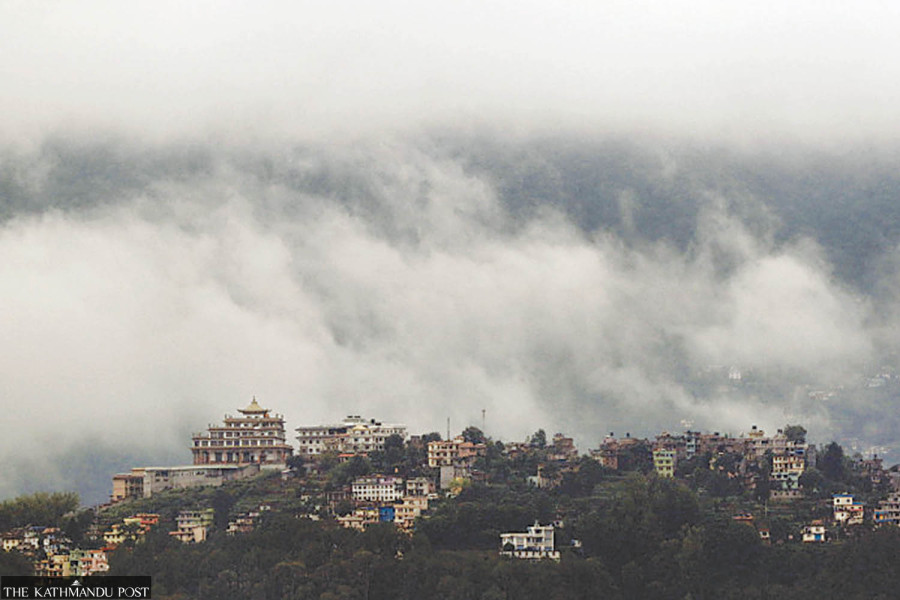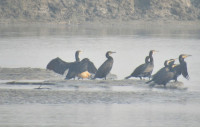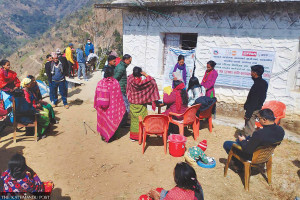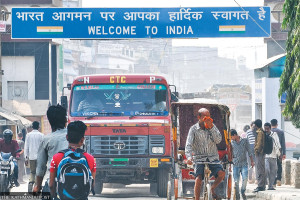 16.12°C Kathmandu
16.12°C KathmanduClimate & Environment
Low-pressure system responsible for cloudy conditions in many places
Temperature set to decline further in coming days, the meteorological office says.
Post Report
A low-pressure area that developed near the Rajasthan state of India along with westerlies caused cloudy conditions in many places throughout Nepal on Monday.
The Meteorological Forecasting Division under the Department of Hydrology and Meteorology said that light rainfall is likely in some places of hilly regions while high hills and mountains could witness snowfall.
“Weather conditions will improve on Tuesday, but the temperature will decline further in the coming days,” said Rojan Lamichhane, a meteorologist at the Division. “No major system is in place to bring heavy rainfall immediately.”
A low-pressure area is a condition in which the atmospheric pressure is lower than that of surrounding locations. The said conditions are commonly associated with cloudy, windy with possible rain or storms, according to experts.
The department has predicted above-average rainfall and above-average maximum and minimum temperatures between October and December.
The department’s climate section, which recently forecast weather conditions for a period from October 1, 2022 to December 31, 2023, says there is a 35–55 percent chance of above-average rainfall during the said period.
Evidence indicates that the maximum temperature in Nepal is rising at a greater rate (0.05 degrees Celsius per year) than the global average (of 0.03 degrees Celsius per year).
The Met department said that the chance of above-average maximum temperature in the said period is 35 to 55 percent and that of above-average minimum temperature is 35 to 65 percent.
The office, however, said that above-average rainfall differs from place to place. The chances of above-average rainfall in the eastern part of Lumbini Province and most places of Koshi, Gandaki, Bagmati and Madhesh provinces is 45 to 55 percent while the chance of above-average rainfall in the rest places is 35 to 45 percent.
The eastern part of Koshi Province, the central and western parts of Madhesh, the central and southern parts of Bagmati, except the central and northeastern parts of Gandaki and Lumbini, most of Karnali, and eastern parts of Sudurpaschim Province, could see above-average maximum temperatures. Such a chance is 35 percent to 45 percent.
Chances of above-average minimum temperatures in Sudurpaschim Province, most parts of Karnali Province and western parts of Lumbini Province are 55 to 65 percent. Similarly, the chances of above-average minimum temperature in central and northern parts of Gandaki Province, and central parts of Lumbini Province is 45 to 55 percent. Chances of above-average minimum temperature are 35 to 45 percent in the rest of the places.
Nepal is one of the most vulnerable countries in the world to the climate crisis and has witnessed multiple extreme weather events over the past decade and a half.
Experts say extreme weather events—excessive rainfall in a short time, continuous rain for several days post-monsoon, dry spells and droughts, below-average precipitation and above-normal temperatures in winter—have become more frequent in Nepal in recent years.
















